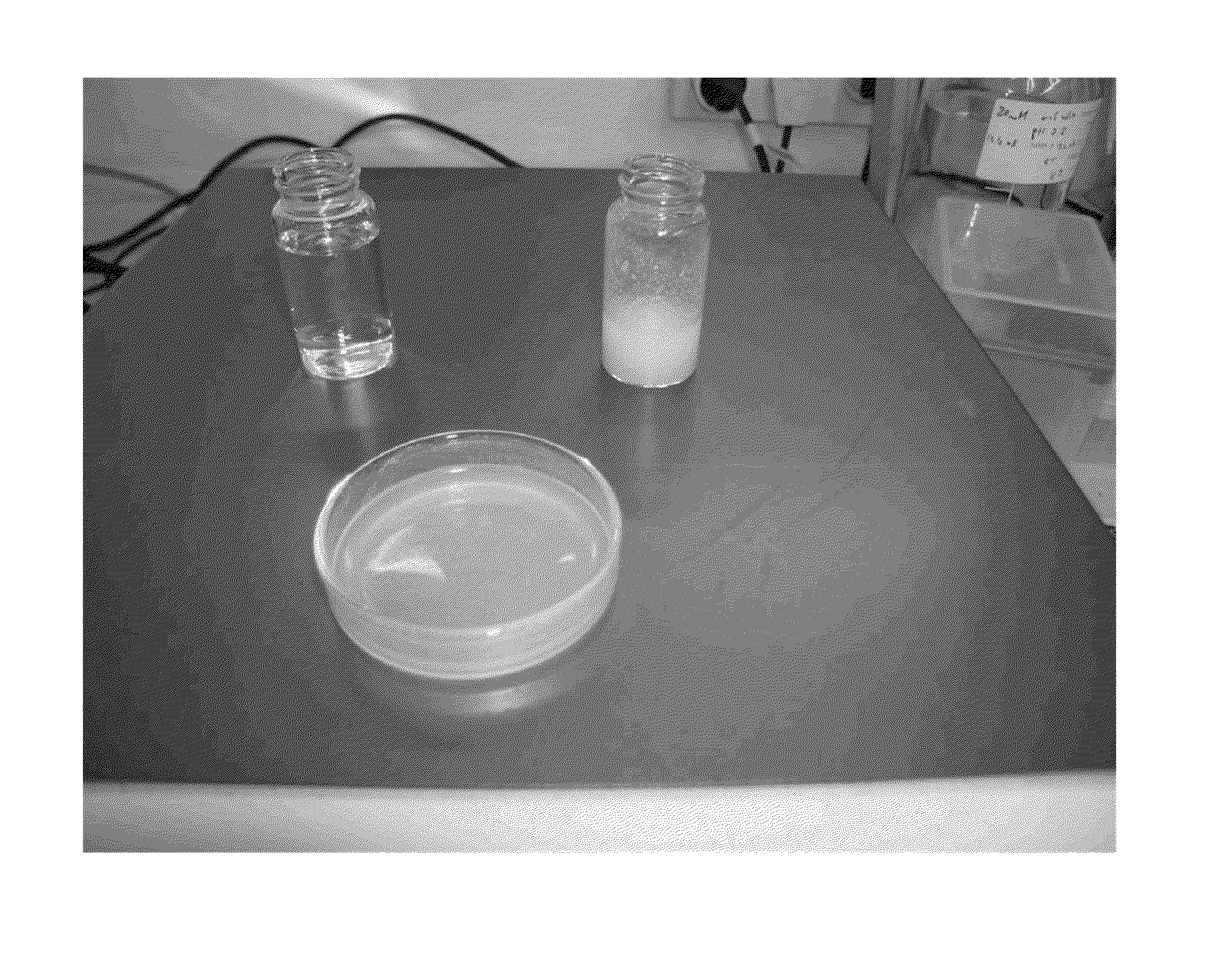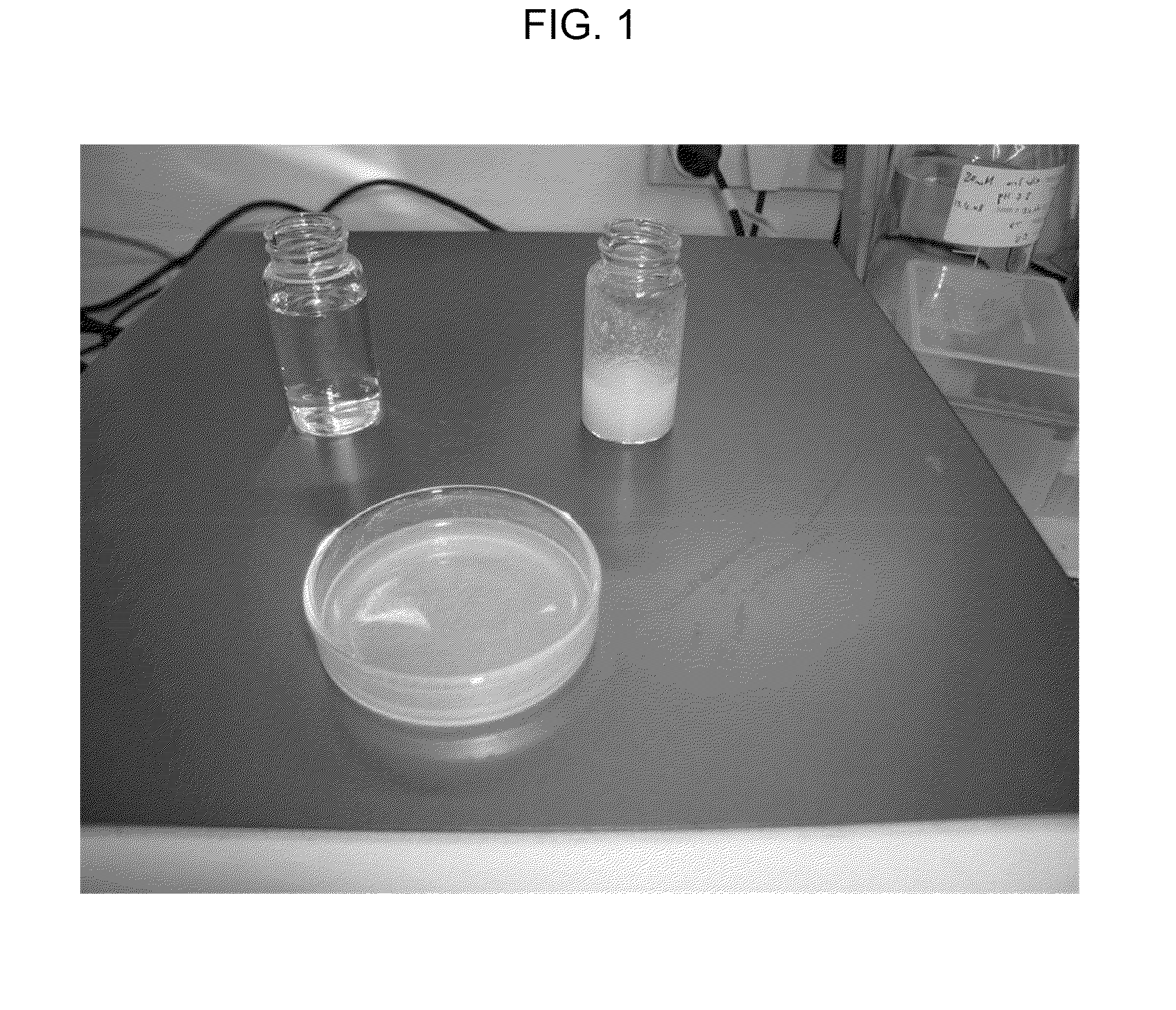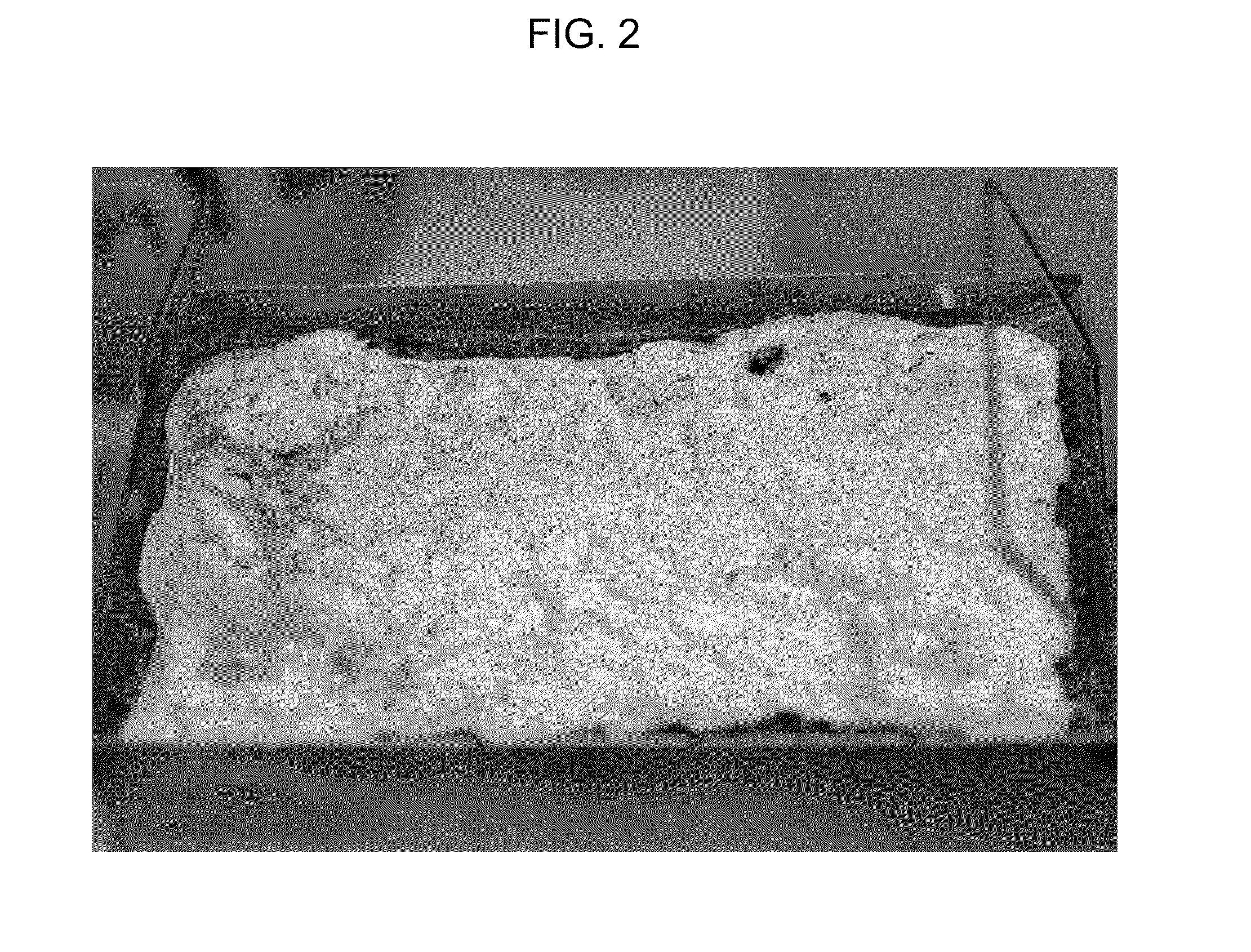Compositions for decontamination
a composition and composition technology, applied in the field of decontamination compositions, can solve the problems of difficult to adequately deal with materials which are highly hazardous even in small amounts, increase the decontamination efficacy of compositions, and increase the risk of life, health and/or the environmen
- Summary
- Abstract
- Description
- Claims
- Application Information
AI Technical Summary
Benefits of technology
Problems solved by technology
Method used
Image
Examples
example 1
Thickening of 10% Hypochlorite Bleach with Aqueous CaCl2 Solutions
[0401]Soluble inorganic salts were investigated for use as new bleach-stable thickening agents, which, upon addition to hypochlorite solution, produce an insoluble salt. Highly soluble CaCl2, which produces the only slightly soluble Ca(OH)2, was first investigated.
[0402]The overall reactions occurring upon addition of CaCl2 to hypochlorite bleach are described in Equation 1:
[0403]Several aqueous solutions of CaCl2 were prepared by dissolving CaCl2 in water, at concentrations ranging from 30% to 50% by weight. The solutions of CaCl2 were added to 10% hypochlorite bleach at a proportion of 1 part CaCl2 solution to 9 parts bleach, by volume. All solutions promoted gelling of hypochlorite bleach upon addition.
[0404]However, gels obtained from CaCl2 solutions with concentrations ranging from 30% to 40% by weight tended to break and become free flowing emulsions.
[0405]The hypochlorite gel derived from 1 part 50% aqueous CaC...
example 2
[0406]Thickening of 10% hypochlorite bleach with solid CaCl2 CaCl2.2H2O was tested as an alternative suitable solid for gel formation. This dihydrate dissolves easily in water, even at low temperatures, and is not hygroscopic.
[0407]1 gram of either finely ground or coarsely ground CaCl2.2H2O was added to 10 ml hypochlorite bleach, and the solution was mixed until all the CaCl2 was dissolved. The coarsely ground salt required more mixing than the finely ground salt. However, both mixtures formed a thixotropic gel similar to the gel obtained with aqueous 50% CaCl2 as described in Example 1.
[0408]The effects of various additives such as cab-o-sil (fumed silica), celite, bentonite and PVP (povidone) were also tested.
[0409]0.5 grams celite, 0.5 grams bentonite, 0.05 grams PVP and 0.17 grams cab-o-sil were each added along with 1 gram CaCl2.2H2O to 10 ml hypochlorite bleach. The viscosity of 10% hypochlorite bleach thickened with CaCl2.2H2O is shown in Table 1.
TABLE 1Viscosities of 10% hy...
example 3
Thickening of 10% Hypochlorite Bleach with Aqueous CaCl2 / Ca(NO3)2 Solutions
[0411]Solutions comprising a decreased amount of CaCl2 along with Ca(NO3)2 were investigated for thickening ability.
[0412]Solutions were prepared by dissolving various amounts of CaCl2 and Ca(NO3)2 in water, such that the total amount of CaCl2 and Ca(NO3)2 was 50% of the solution by weight.
[0413]It was found that solutions which contained less than 10% Ca(NO3)2 tended to precipitate at 4° C. Solutions of 10% Ca(NO3)2 and 40% CaCl2 remained clear for a year even at −20° C., except for a single sample, in which minute amounts of precipitate appeared and were re-dissolved upon heating to room temperature. Due to its excellent dissolution in water, Ca(NO3)2.4H2O was chosen over Ca(NO3)2 for preparing solutions for further study.
[0414]An aqueous solution of CaCl2 and Ca(NO3)2 were prepared by dissolving CaCl2 and Ca(NO3)2.4H2O in water at concentrations of 40% and 10% by weight, respectively. The aqueous solution ...
PUM
 Login to View More
Login to View More Abstract
Description
Claims
Application Information
 Login to View More
Login to View More - R&D
- Intellectual Property
- Life Sciences
- Materials
- Tech Scout
- Unparalleled Data Quality
- Higher Quality Content
- 60% Fewer Hallucinations
Browse by: Latest US Patents, China's latest patents, Technical Efficacy Thesaurus, Application Domain, Technology Topic, Popular Technical Reports.
© 2025 PatSnap. All rights reserved.Legal|Privacy policy|Modern Slavery Act Transparency Statement|Sitemap|About US| Contact US: help@patsnap.com



